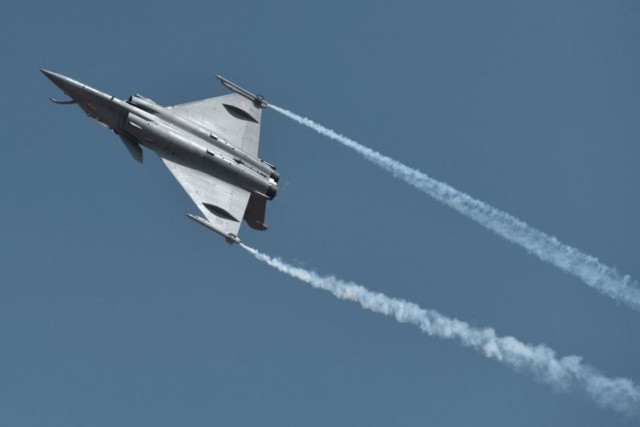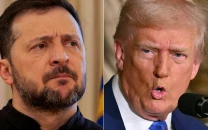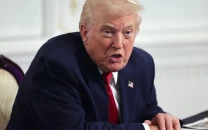Asia driving 'explosion' in global arms trade: Study
Budget cuts in Washington mean that it will account for just 30 per cent by 2021 to fall behind Asia at 31 per cent.

India aims to purchase French built Rafale aircraft to boost its airforce. PHOTO: AFP/ FILE
The global arms trade jumped by 30 per cent to $73.5 billion between 2008-2012 in spite of the economic downturn, driven by surging exports from China and demand from countries like India, and is set to more than double by 2020, defense and security consultancy IHS Jane's said on Tuesday.
"Budgets are shifting East and global arms trade is increasing competition. This is the biggest explosion in trade the world has ever seen," said Paul Burton, a senior manager at IHS Jane's whose study looked at 34,000 defense acquisition programs.
The United States has accounted for the lion's share of global defense spending over the past decade, but budget cuts in Washington, as it withdraws from countries such as Afghanistan, mean that it will account for just 30 per cent by 2021 to fall behind Asia at 31 per cent.
Military spending in the Asia Pacific region - which includes China, India and Indonesia - will rise 35 per cent to $501 billion in the next eight years, compared to a 28 per cent fall in US spending to $472 billion over the same period, IHS Jane's said.
"The big Western defense companies have no option - export or shrink - but this could be sowing the seed of their own demise; the opportunities in the East are a double-edged sword, fuelling a trend which threatens US dominance of defense." said Guy Anderson, senior principal analyst at IHS Jane's.
China's ramp-up in defense spending in recent years is worrying its neighbors such as Japan, with whom it is currently embroiled in a stand-off over a series of uninhabited islands, despite its repeated reassurances that there is nothing to fear.
Japan, as well as India and South Korea, are among countries being courted by weapon makers such as Lockheed Martin, Boeing and BAE Systems who want to sell them fighter jets and other equipment to make up for reduced spending in their Western home markets, but such deals tend to require investment in the buyers's defense industries.
India, for instance, is speaking exclusively to France's Dassault Aviation on a $12 billion order of 126 warplanes and wants 50 per cent of the work to be given to Indian companies.
China is expected to increase its defense budget by 64 per cent to $207 billion by 2021, compared to India and Indonesia which are respectively forecast to spend 54 and 113 per cent more, the study said.
These countries aspire to build thriving defense industries capable of developing modern equipment such as fighter jets and aircraft carriers, and may be able to export "world class kit" rivaling that of the West in a decade as a result of their willingness to spend, IHS Jane's said.



















COMMENTS
Comments are moderated and generally will be posted if they are on-topic and not abusive.
For more information, please see our Comments FAQ